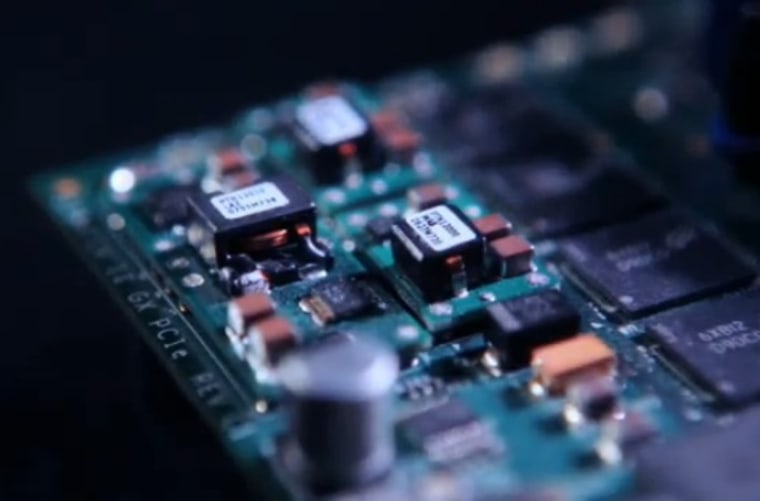Google may have brought gigabit-speed Internet to Kansas City, but researchers in the UK are one step closer to improving fiber-optic networks like Google's by orders of magnitude.
A team at Bangor University in Wales is working on what's called optical orthogonal frequency division multiplexing, or OOFDM. The technique has already allowed them to reach a speed of 20 gigabits per second, and 40 gigabits and more are on the roadmap. At that speed, you could fill a 16 GB phone or tablet up in about six seconds — though that's far faster than its drive could even write!
Fiber connections normally transmit data as an incredibly high-frequency series of pulses down the length of the cable. But the more data you pack into the signal, the more likely there will be an error due to microscopic flaws in the cable or nodes.
To prevent this, you can of course divide the signal over several cables, which can be costly and may necessitate expensive hardware upgrades, or you can improve how that signal is encoded. The Bangor team, led by Dr. Jianming Tang, is working on the latter.
Instead of sending a single high-frequency signal, they send multiple signals at the same time that are designed so they can't interfere with one another. It multiplies the number of streams they can put in one cable, and consequently the amount of data they can send increases as well. This video from Bangor may further elucidate the technique:
Unfortunately, it too requires new hardware that can encode and decode this multiplexed data stream — but luckily, only the devices transmitting and receiving the data would need to be replaced. No need to tear up the streets and lay down more cable, meaning this approach would be relatively cheap to implement.

That is, if anyone can make a transceiver that can be mass-manufactured and move the technology out of the lab. That's what Dr. Tang and his team are really focused on: using off-the-shelf components and making the multiplexing device easy to drop into existing networks at low cost.
If you're getting bandwidth envy, don't worry: Even if the technology were rolled out today, hardly anyone would be able to take advantage of it. Broadband and Internet services worldwide only use — and mostly, only need — a tiny fraction of the 40 gigabits theorized.
Devin Coldewey is a contributing writer for NBC News Digital. His personal website is coldewey.cc.
